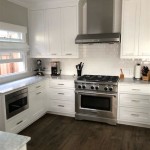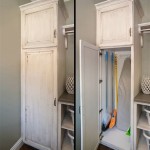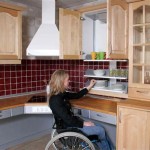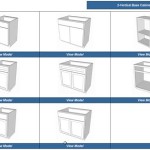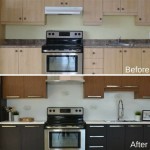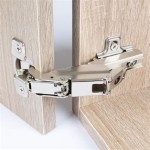1940s Kitchen Cabinets: A Glimpse into Mid-Century Style
The 1940s marked a significant turning point in kitchen design, influenced by wartime practicality and the subsequent post-war boom. Kitchen cabinets of this era reflect these societal shifts, showcasing a blend of functionality and emerging modern aesthetics. Understanding the characteristics of 1940s kitchen cabinets provides valuable insight into the evolution of kitchen design and offers inspiration for those seeking a vintage or retro aesthetic in their homes today.
Metal cabinets gained prominence during the 1940s, largely due to wartime restrictions on materials like wood. Steel became a readily available alternative, and manufacturers capitalized on its durability and ease of cleaning. These metal cabinets often featured simple, streamlined designs with recessed paneling or smooth, flat fronts. Common colors included white, cream, and pastel shades, reflecting the optimistic mood of the post-war era. While some homeowners may have viewed metal cabinets as a temporary solution, they became a defining feature of many 1940s kitchens.
Wood cabinets, although less common during the war years, continued to be produced and remained a desirable option for homeowners. Oak was a popular choice, favored for its strength and classic appeal. Unlike the ornate detailing of earlier periods, 1940s wood cabinets often featured simpler designs with less ornamentation. Flat panel doors and minimal hardware were characteristic of this era, reflecting the shift towards a more streamlined aesthetic. Natural wood finishes or painted surfaces in muted tones were common, complementing the overall understated design.
Cabinet hardware in the 1940s was typically understated and functional. Simple knobs and pulls made of chrome, nickel, or bakelite were common choices. These materials offered durability and ease of cleaning, aligning with the practical considerations of the time. The streamlined designs of the hardware complemented the clean lines of the cabinets themselves, contributing to the overall minimalist aesthetic.
Functionality was a key consideration in 1940s kitchen design. Cabinets were designed to maximize storage space and streamline workflow. Built-in features, such as spice racks, bread boxes, and flour bins, were often incorporated into the cabinet designs, reflecting the emphasis on efficiency and organization. These integrated features not only saved space but also contributed to the clean, uncluttered look that characterized 1940s kitchens.
The layout of 1940s kitchens often centered around the "work triangle," a design principle that emphasized efficient movement between the sink, stove, and refrigerator. Cabinets played a crucial role in this layout, providing storage and work surfaces within easy reach of these key appliances. This focus on functionality reflected the changing role of the kitchen in the home, as it increasingly became a central hub for family activities.
Color palettes in 1940s kitchens were often light and airy, reflecting the optimistic mood of the post-war period. Pastel shades, such as light blue, green, and yellow, were popular choices for both cabinets and walls. These colors created a cheerful and inviting atmosphere, contributing to the sense of renewal and hope that characterized the era.
Restoring or replicating the look of 1940s kitchen cabinets can be a rewarding project for homeowners seeking to add vintage charm to their homes. Original 1940s cabinets can sometimes be found in salvage yards or antique shops, offering a unique and authentic touch. Alternatively, modern reproductions are available, offering a wider range of options and customization possibilities. When choosing hardware, opt for simple, streamlined designs in chrome, nickel, or bakelite to maintain the period-appropriate aesthetic.
The influence of 1940s kitchen design can still be seen in contemporary kitchen trends. The emphasis on functionality, streamlined design, and light color palettes continues to resonate with homeowners today. While modern kitchens often incorporate updated materials and technology, the underlying principles of efficiency and simplicity remain rooted in the design innovations of the 1940s.
Understanding the distinct characteristics of 1940s kitchen cabinets provides valuable context for appreciating the evolution of kitchen design. From the prevalence of metal cabinets due to wartime restrictions to the emergence of streamlined aesthetics and integrated features, 1940s kitchen cabinets offer a fascinating glimpse into the social and technological influences that shaped the modern kitchen.
The legacy of 1940s kitchen cabinets extends beyond their historical significance. Their enduring appeal lies in their timeless combination of functionality and understated elegance. Whether through restoration projects or contemporary interpretations, the design principles of this era continue to inspire and inform kitchen design today.

Amazing Vintage Photos Show What Kitchens Looked Like Between The 1940s And 1950s Rare Historical

Create A 1940s Style Kitchen Pam S Design Tips Formula 1 Retro Renovation

Need Help With My 1940s Kitchen Cabinets

Vintage Retro And Modern How Kitchens Have Evolved Thru The Decades Tran Thomas

Kitchen And Baths Antique Cabinets Renovation Vintage
The Rise Of Modern Kitchen Architect

Update Montgomery Ward Steel Kitchen Cabinets A Catalog From 1941 Retro Renovation

My 1940s Kitchen Circa Vintage Clothing

The History Of Kitchen Cabinets Superior Drawings

Statelibqld 2 142631 Kitchen Cabinets In A Brisbane Home Built The 1940s Picryl Public Domain Media Search Engine
Related Posts

